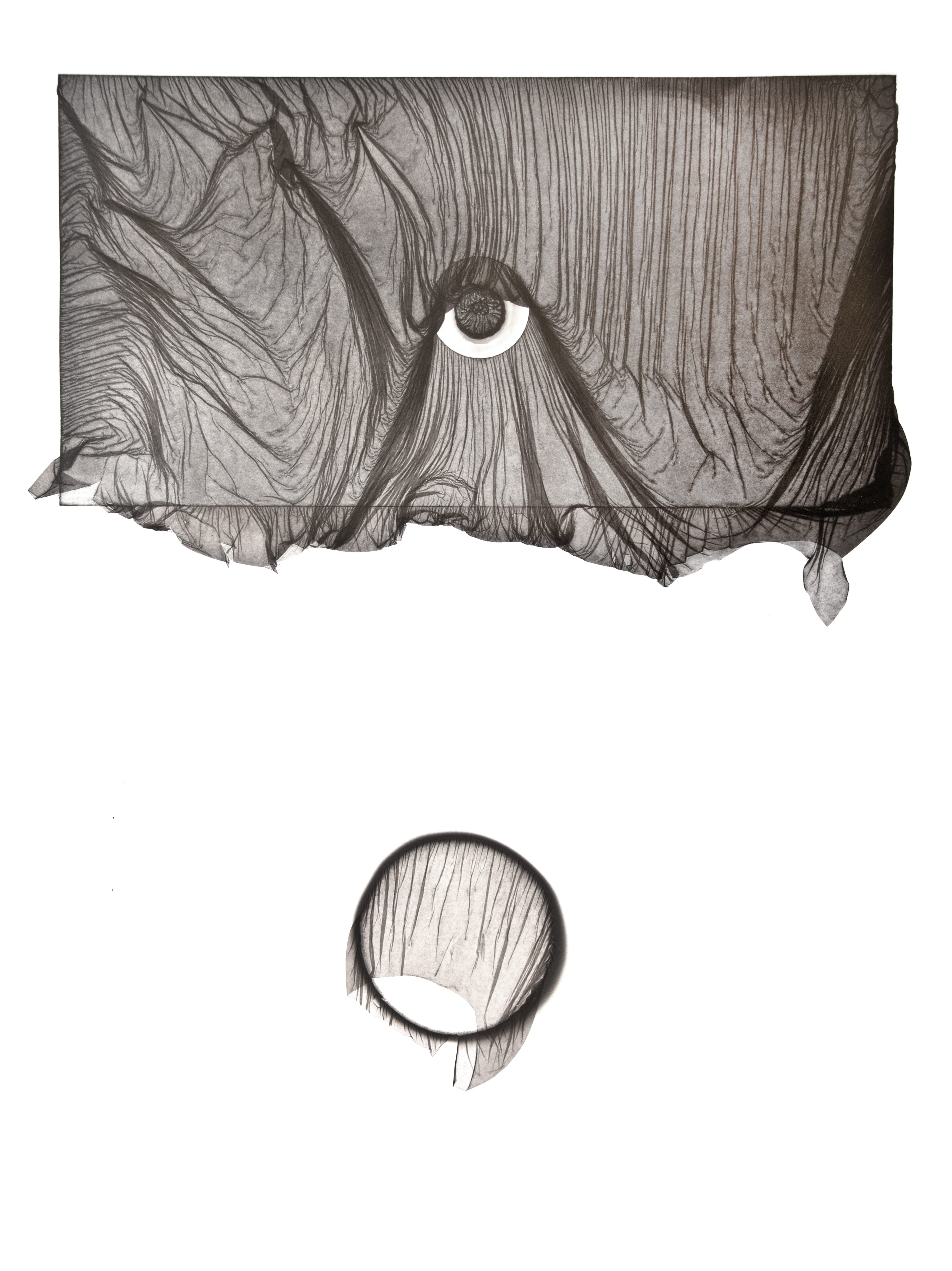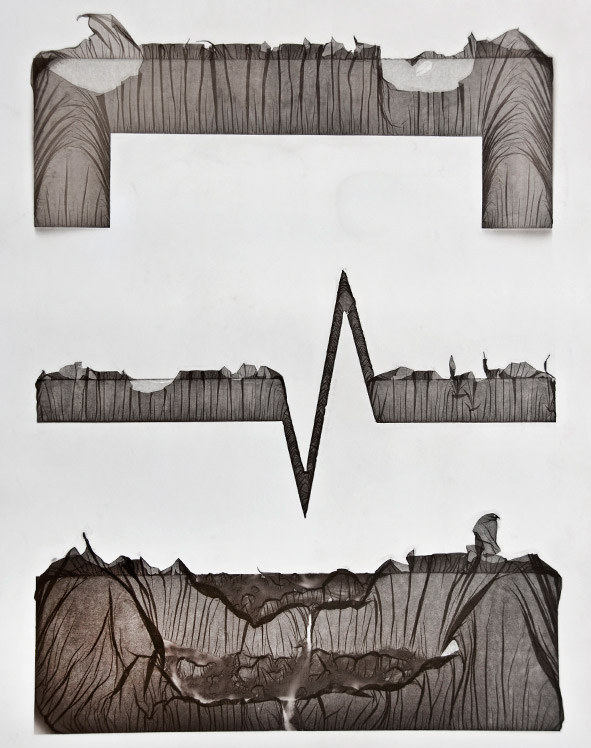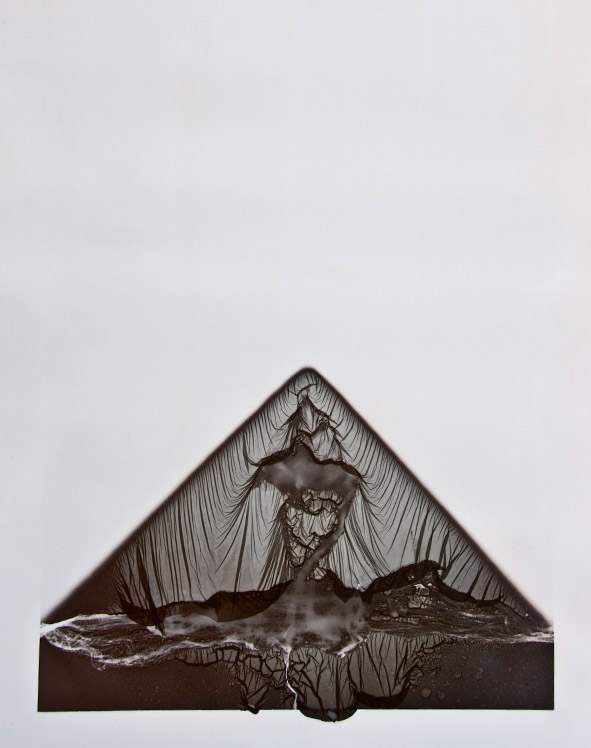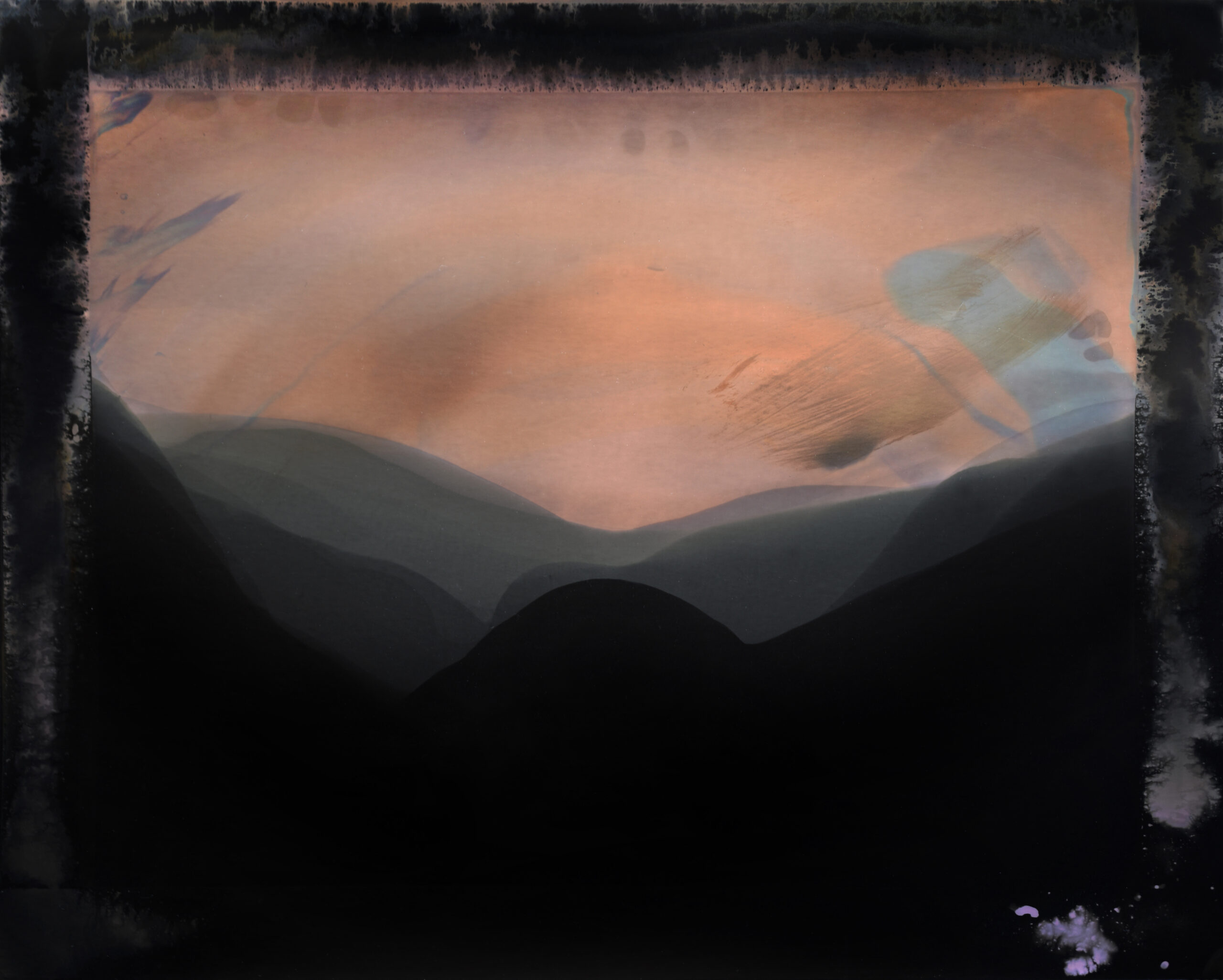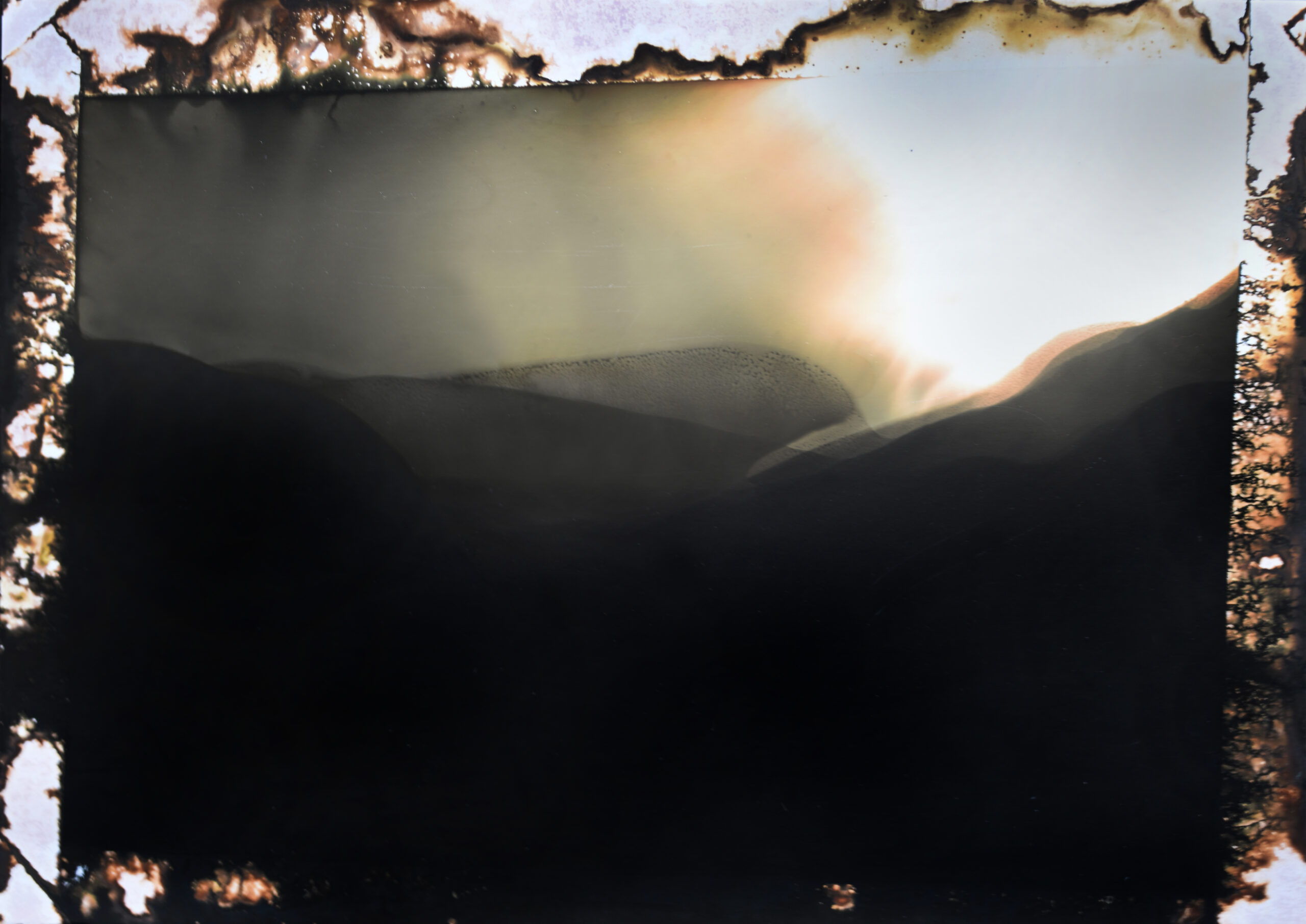Directions: The photographic drawing
I achieve my figurative message through traditional photography, using analog or digital cameras. For abstraction, I set them aside. Sometimes what people call abstractions are nothing more than images of existing things, such as textures on surfaces, portions of objects or subjects and architectural details, as well as illusory color games.
That vision doesn’t satisfy me. Therefore, to achieve my concept of abstraction I need to become independent of every instrument. I do this by working with photographic processes in which I do not use cameras or enlargers, working only with film or photographic paper and chemicals.
When I want to create an abstraction that as the word itself indicates, it implies a separation from what I perceive as real, the detour that leads to other seas that I do not know. To get there, or rather to barely get into them, I don’t want artifacts, not even compass, spyglass or rudder. There I only agree to swim: it is the body, it is my hands, and the rhythm of my breathing. Going in and out of a new surface, in a medium that is not familiar to me.
What’s my course, my address? I don’t know. Maybe it’s the earth I sense blurred in the distance. Or perhaps fate is only still the sea, the very sea from which I come, but agitated by other winds.
Abstraction in painting makes visible the invisible, with the resource of the gaze facing inwards. My approach to this technique is that the imaginary flows without the obstacle of deductive thinking, which most of the time is my ally in other expressive modalities, when I find it advantageous to analyze, correct, or redo.
For what might be called photographic drawing (light strokes, chemicals, and sensitive materials), my method is another: discovery, experimentation, freedom, the sense of the spatial carried to two dimensions, the shape by form itself, intuition, inventiveness, spontaneity, composition, with or without harmony.
To make the unknown unrecognizable.
About “Cartographies of an in-land sailor”
This ship has been sailing for more than three decades and today, (April 2020), it’s the first time that this solitaire and absentminded sailor decided to make records, some retrospective and some recent ones.
Chaotic, absurd tales from here, there, nowhere… And also brief descriptions of his imaginary sailings.
Just think of the logbook written by the captain of the Flying Dutchman: ghostly notes, vanishing details, words and pictures to be read and seen by wandering spirits, or perhaps by… you?
Welcome aboard!
Recent posts
ROPES, NETS AND KNOTS
For this sailor his mission is not only to navigate, but also to create the nets that make possible [...]
Rituals of a sailor
Sometimes there is a kind of spirit of Thanatos wandering around the board, wanting to take me to his [...]
In the open sea (When I’m creating)
One unfolds the sails according to the wind, moderates the tensions of the ropes and relies on mirages. Offshore, [...]

